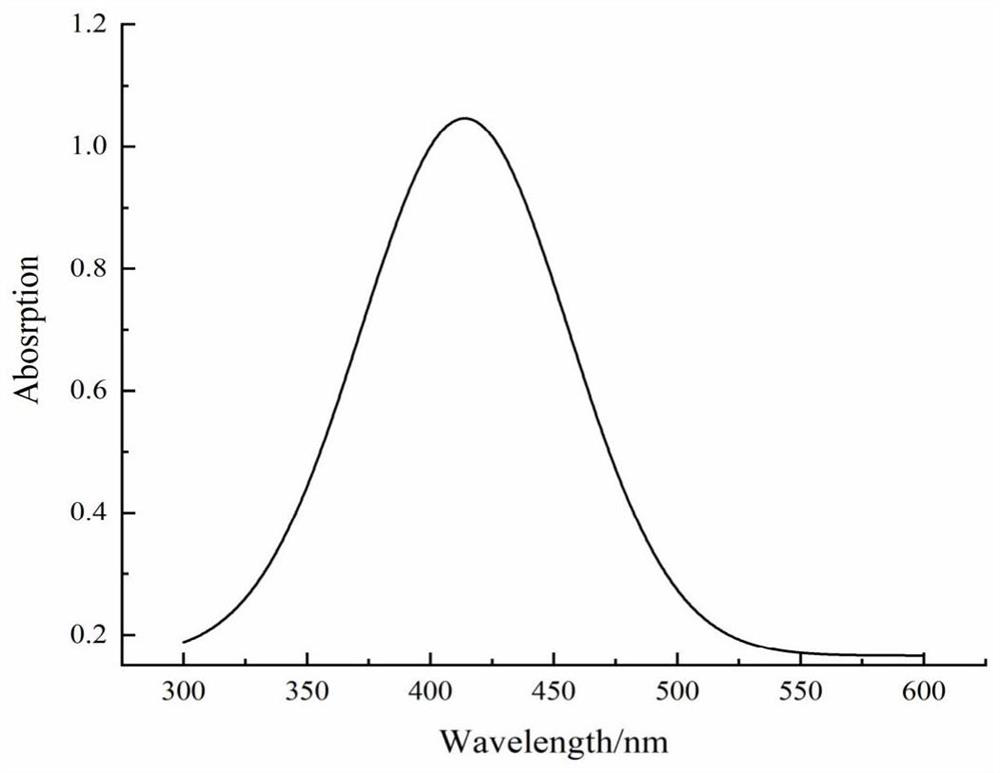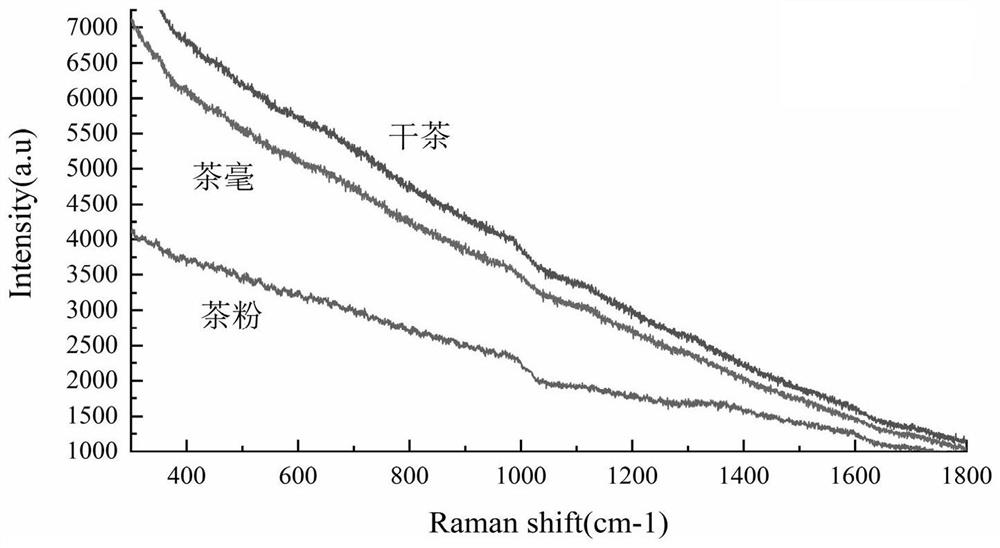Method for judging freshness of green tea based on Raman spectrum
A Raman spectroscopy, green tea technology, applied in Raman scattering, material analysis by optical means, material excitation analysis, etc., can solve the problems of long detection time, complicated processing process, etc., achieve good peak separation, Raman The effect of strong signal and shortened detection time
- Summary
- Abstract
- Description
- Claims
- Application Information
AI Technical Summary
Problems solved by technology
Method used
Image
Examples
Embodiment 1
[0057] The method for judging the freshness of green tea based on Raman spectrum comprises the following steps:
[0058] (1) Preparation of tea soup: Weigh 1 g of dry tea and place it in a conical flask, add 50 mL of boiling water, cover it and place it in a water bath at 70°C for 30 minutes, take it out, cool it to room temperature, and filter the tea soup for detection.
[0059] (2) Preparation of nano-silver glue: dissolve 0.036g silver nitrate in 20ml ultrapure water to make silver nitrate mother liquor, dissolve 0.1g sodium citrate in 10ml ultrapure water to make sodium citrate mother liquor, then take 2mL nitric acid Dissolve the silver solution in 49mL of ultra-pure water, boil it in a microwave oven on high heat until it boils, take it out quickly, add 1mL of sodium citrate mother liquor, then put it in the microwave oven and continue to cook on high heat until the color of the solution turns gray-green, take it out and cool it down to room temperature, and set aside a...
Embodiment 2
[0071] The difference between this embodiment and embodiment 1 is that the ratio of dry tea to boiling water is adjusted, as shown in Table 1.
[0072] serial number Amount of tea (g) Water injection volume (ml) Water bath temperature (℃) Water bath time (min) 1 1 50 100 10 2 3 50 100 10 3 1 50 100 30 4 1 50 70 30 5 3 50 70 30 6 1 (tea powder) 50 70 30 7 1 50 70 60
[0073] The Raman signal is related to the concentration of substances in the tea soup to a certain extent, so increasing the concentration of the tea soup will effectively enhance the signal of the tea soup. In order to screen out a better tea-to-water ratio, 7 control experiments were set up, and the results are as follows: Figure 5 As shown, the spectrum of No. 4 treatment group corresponds to the black spectrum at the top of the figure. When the tea water ratio is 3:50 and the Raman signal of the tea soup is the strongest and the pe...
Embodiment 3
[0075] The samples of fried green tea in 1998 and the sample of fried green tea in 2018 were used for Raman detection. The tea samples were all from the evaluation room of Anhui Agricultural University and stored at room temperature. Weigh 1g of dry tea and place it in a conical flask, add 50mL of boiling water, cover it and place it in a water bath at 70°C, incubate for 30min, take it out and cool it to room temperature, then filter the tea soup for detection.
[0076] Take an appropriate amount of tea soup and mix it with the same amount of silver colloid solution prepared in Example 1. After mixing evenly, drop it on a gold-plated glass slide. After air-drying, perform Raman detection. Raman detection parameters are set to excitation wavelength 785nm, power 25mW, 10x objective lens , the grating is 600 reticles, and the acquisition range is 300-1800cm -1 , the number of acquisitions is 3 times, and the total acquisition time is 6s. The Raman test results were as Figure 6...
PUM
 Login to View More
Login to View More Abstract
Description
Claims
Application Information
 Login to View More
Login to View More - R&D
- Intellectual Property
- Life Sciences
- Materials
- Tech Scout
- Unparalleled Data Quality
- Higher Quality Content
- 60% Fewer Hallucinations
Browse by: Latest US Patents, China's latest patents, Technical Efficacy Thesaurus, Application Domain, Technology Topic, Popular Technical Reports.
© 2025 PatSnap. All rights reserved.Legal|Privacy policy|Modern Slavery Act Transparency Statement|Sitemap|About US| Contact US: help@patsnap.com



